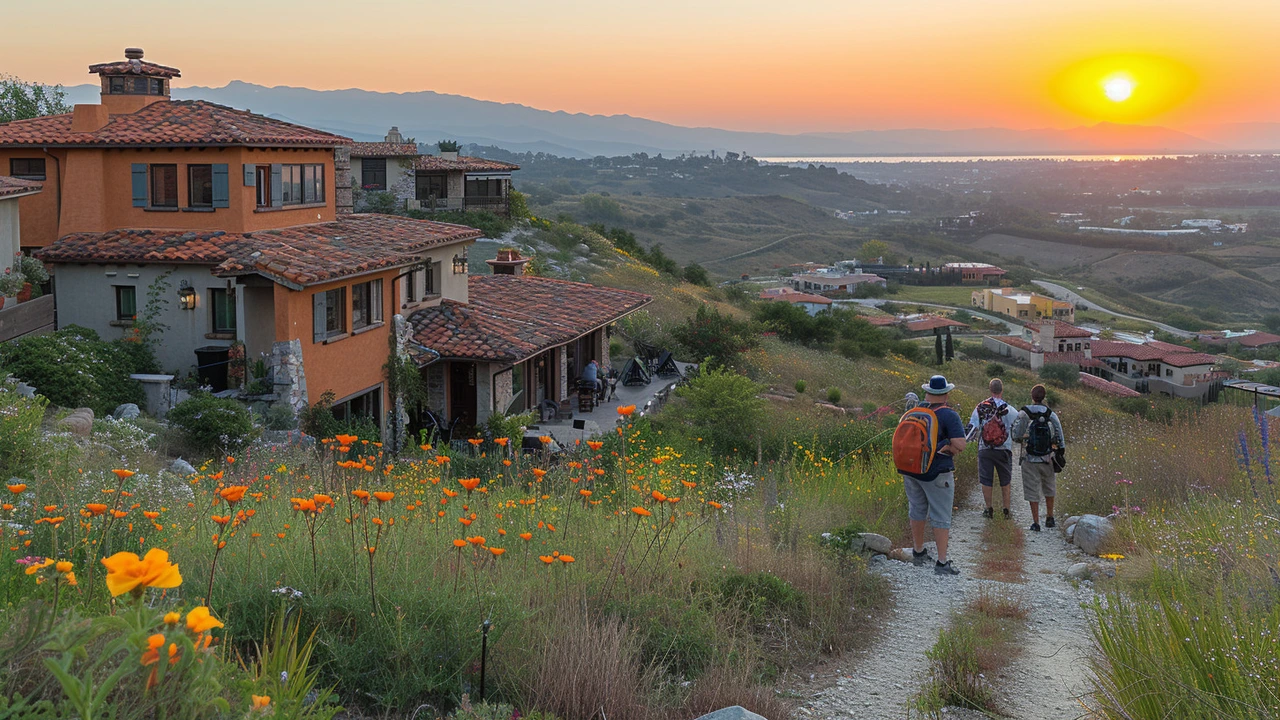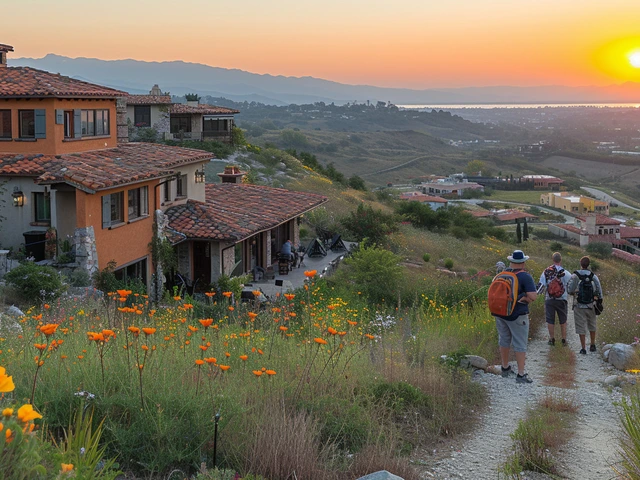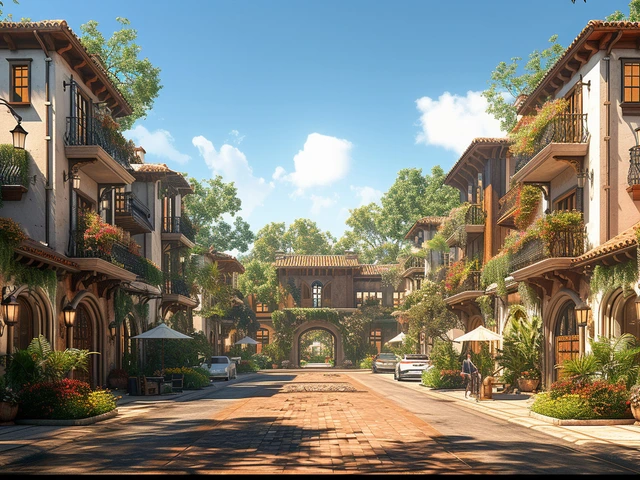The Origin of Mediterranean Revival Architecture
Now, would you like to hear a tale that incorporates sun-drenched shores, historical quirks, and a splash of architectural spectacle? Then, my friend, you're in the right place. Today we're diving into the world of Mediterranean Revival Architecture, a style that is as fascinating as it is visually stunning.
Our journey begins in the lands surrounded by the Mediterranean Sea. Born during the famed Roaring Twenties, a time of progressive ambitions and an art renaissance, Mediterranean Revival Architecture wasn't quite the newborn bundle of joy. No, folks, this little baby was warm from the belly of history, steeped in eons of tradition from other lands, and brought forward into a new age. The style drew inspiration from the architectural wonders of Spanish, Italian, and French country villas, and my, did it do a fantastic job of it!
Influences Behind Mediterranean Revival Architecture
Like a glorious melting pot, Mediterranean Revival embraces a broad range of influences. From Spanish Colonial styles' thick stucco walls, terracotta tiles, and balconies, Mediterranean Revival Architecture said, "I'll take that, thank you very much." But it didn't stop there—no, not by a stretch! It went further, blending in French doors, large symmetrical facades, and ornamental details reminiscent of Italian Renaissance. You see, my friends, this architectural style is quite the international party. It truly channeled the sights, the textures, and the spirit of Mediterranean life, and bottled it all into one heady mix of design prowess.
If I may interject a personal anecdote here, the first time my partner, Lydia, and I saw a real-life Mediterranean Revival home on an overseas adventure, we were simply spellbound. We stood there, gawking at the red-tiled roof and the wide archways that just whispered history and charm. The appeal of this architecture does that to you—it draws you in and keeps you marveling. It sparked our enduring appreciation for this style which has become a shared passion of ours.
Key Elements of Mediterranean Revival Architecture
The devil, as they say, is in the details. And when it comes to Mediterranean Revival Architecture, the details are very devilishly delicious indeed. But let's get past the poetic adulation for a moment and talk shop. What are these key elements that make this style uniquely outstanding? Well, buckle up!
First off, let's talk about the roofs. Mediterranean Revival’s hallmark includes red clay, barrel-tiled roofs, often low-pitched and hipped. If a home was a person, the Mediterranean Revival roof would be the fabulous wide-brimmed hat. A delightfully robust hat, mind you, designed to keep that pesky inclement weather at bay.
Next, behold the exteriors, typically completed with stucco – a smooth coat of aggregate, water, and cement, creating a finish as warm as the Mediterranean sun itself. Don't you just want to run your hand along those walls?
Then, we have the ornamental details. No wall is left untouched by the creative flourish of embellishment. You'll find grilles, wrought-iron railings, arched doors and windows, and carved doors. There really is a sense of drama and flair that radiates from Mediterranean Revival houses.
Mediterranean Revival's Grand Entrances
I often say, there are entrances, and then there are ENTRANCES. Believe me, Mediterranean Revival belongs to the latter category. Thanks to their auditorium-like arched doorways, these homes have the fantastic ability to make even a casual pizza delivery feel like a grand event. Add to that the charm of a rustic, wooden door often seen in this architectural style, and you've got a winning combination.
Lydia and I often mock-practice our grand entrances at home in Wellington, imagining our humble abode is a thoughtfully designed Mediterranean Revival masterpiece. It's good fun, to tell you the truth, and it adds a dash of architectural chic to our day!
Charming Outdoor Living Spaces
Now, Mediterranean cultures are renowned for their outdoor living way of life, and likewise, houses designed in the Mediterranean Revival style, more often than not, feature remarkable outdoor spaces. We're talking about spacious courtyards, patios dotted with lavish fountains, balconies overlooking manicured gardens - you name it. You see, this architecture style is not just about defining elegant spaces within four walls. It extends beyond, connecting the indoors with the outdoors, rather seamlessly if I may add.
Outdoor spaces are very much a part of living in a Mediterranean Revival home. They are places to lounge, to dine, to entertain, and most importantly, they serve as spaces to simply soak in the beauty of the surroundings. Having lived in Wellington - a city that takes pride in its lush greenery and natural beauty - Lydia and I always have a soft spot for any architectural style that takes outdoor spaces into consideration.
Mediterranean Revival Today
Now let's bring ourselves to the present day. Nearly a century after its debut, how does Mediterranean Revival Architecture hold up? Well, I'm pleased to report it's as radiant as ever. Remember, folks, classics never fade away; they merely simmer gently, adding flavor to our contemporary world.
Today, you can easily spot a Mediterranean Revival building not only dotting the coastlines or nestled in the sun-dappled streets of California and Florida but also tastefully incorporated within the bustling urban landscapes. It's like spotting an old friend from your wanderlust-infused youthful escapades right in your neighborhood - warm, comforting, and ever so charismatic.
Mediterranean Revival Architecture, my friends, appeared with a flourish, and it's here to stay. It's a celebration of history, a beautiful amalgamation of styles, and a testament to the enduring appeal of design inspired by the Mediterranean. It is, without a shadow of a doubt, a sophisticated design choice for any looking to bring a bit of old-world charm into their modern sanctuaries.





Leave a Comments